Today is World Sparrow Day and since I love all of the sparrows on the planet I thought I’d share some of the sparrows I have photographed in North America.
 Excited American Tree Sparrow
Excited American Tree Sparrow
During their breeding season American Tree Sparrows are found near the northern tree line in thickets of willow, birch, alder, spruce and open tundra. During migration and winter they can be found in marshes, hedgerows, open forests and weedy fields.
I found this one in Summit County in the Wasatch Mountains that are east of where I live in Salt Lake City.
 Brewer’s Sparrow on a Sagebrush near the Flaming Gorge Reservoir
Brewer’s Sparrow on a Sagebrush near the Flaming Gorge Reservoir
Brewer’s Sparrows are found in the Western U.S, and parts of southwestern Canada during the breeding season and the southwestern U.S and Mexico during the nonbreeding season. Brewer’s Sparrows preferred habitat includes alpine meadows and sagebrush.
I spotted this Brewer’s Sparrow in a sagebrush located at Antelope Flats near Flaming Gorge Reservoir in Daggett County, Utah.
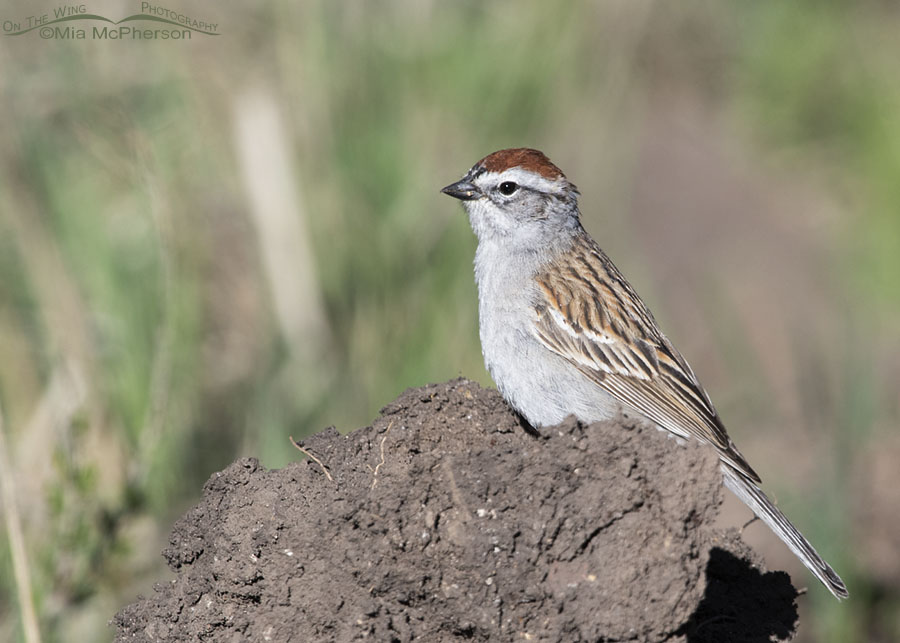 Adult Chipping Sparrow during breeding season
Adult Chipping Sparrow during breeding season
Chipping Sparrows can be year round residents or migrate short distances within their range. Throughout the year they can be found in all the lower 48 states and Alaska. Chipping Sparrows prefer open woodlands, grasslands, forest edges, brushy pastures, gardens and parks.
I found this Chipping Sparrow in the sky island mountains of the West Desert of Utah in Tooele County.
 Low light Dark-eyed Junco in snow
Low light Dark-eyed Junco in snow
Dark-eyed Juncos are migratory. Some are year round residents in their range but will move to lower elevations during the winter and then move higher during the breeding season. Dark-eyed Juncos prefer forests of conifers and mixed woods from sea level to elevations of more than 11,000 feet during their breeding season. During the nonbreeding season they frequent fields, parks, roadsides, and yards and gardens.
This Dark-eyed Junco was photographed close to where I Live on Salt Lake County.
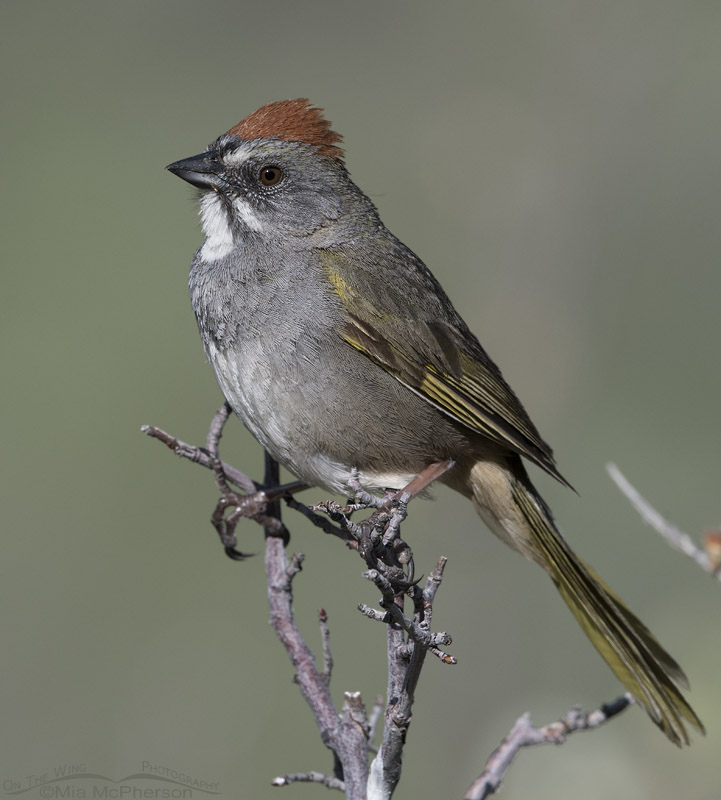 Green-tailed Towhee close up
Green-tailed Towhee close up
Green-tailed Towhees are migratory and during the breeding season are found mostly in the western U.S. and during the winter in the southern most parts of the U.S. and in Mexico. Green-tailed Towhees prefer shrubby habitat, sagebrush steppes, open pinyon-juniper forests, dry washes, desert grasslands, arroyos, and mountain canyons up to 10,000 feet in elevation.
When I found this Green-tailed Towhee it was singing in a serviceberry bush in the Wasatch Mountains in Morgan County.
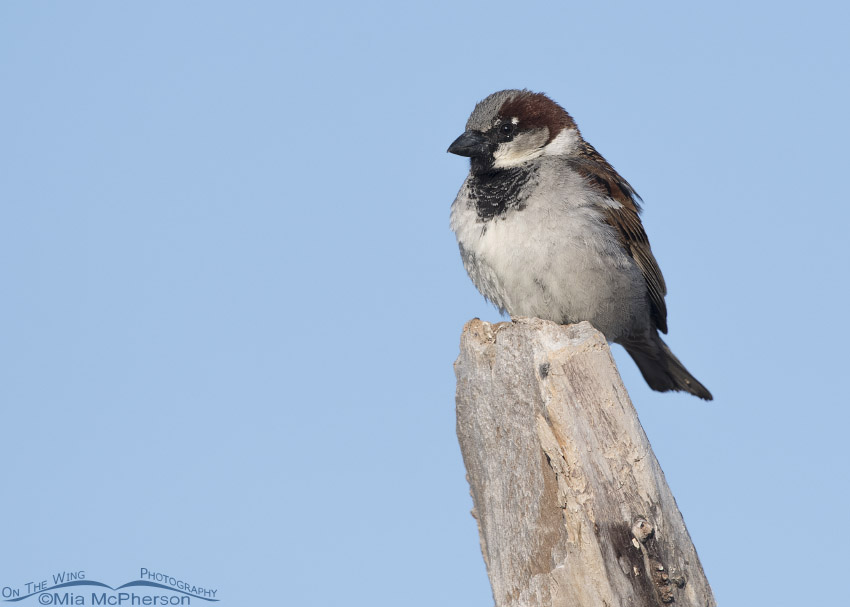 Perched male House Sparrow
Perched male House Sparrow
House Sparrows are medium sized, stocky members of the finch family from the Old World. They are invasive and can present problems for native bird species. House Sparrows are non-migratory. House Sparrows were introduced to North America. In Europe populations of this species are in steep decline and they are the reason World Sparrow Day was started in 2010.
I found this male House Sparrow along the road leading to the Bear River Migratory Bird Refuge auto tour route in Box Elder County.
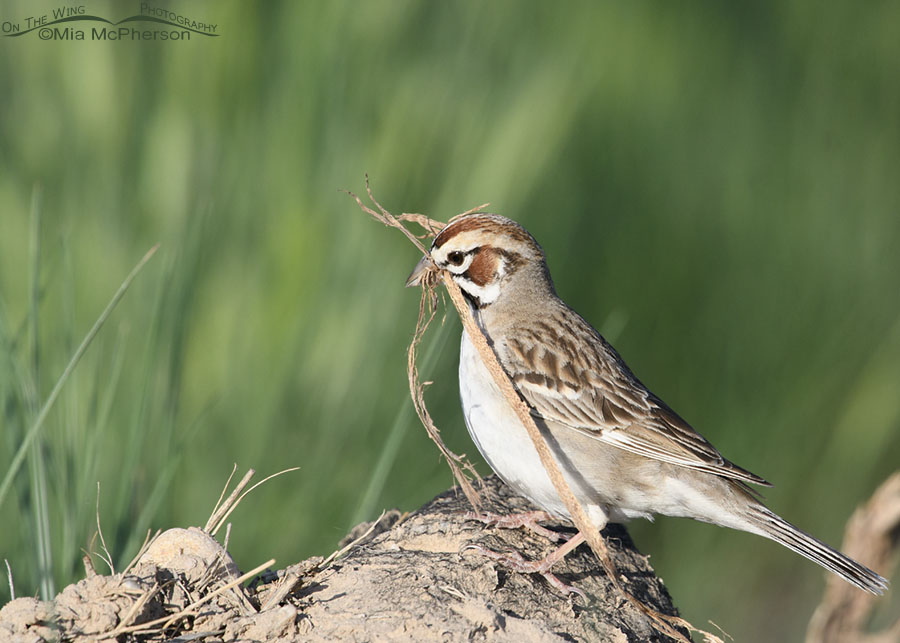 Lark Sparrow with nesting materials in its bill
Lark Sparrow with nesting materials in its bill
Lark Sparrows are migratory in most of their range but in southern areas they can be year round residents. They are primarily found in the western parts of Canada and the U.S. during the breeding season but can be found as far east as Ohio, Tennessee and the most northwestern tip of Georgia. They winter as far south as southern Mexico. Lark Sparrows prefer open habitat like grasslands, fields, pastures farmlands and roadsides.
I spotted this Lark Sparrow gathering nesting materials in the sky island mountains of the West Desert of Utah in Tooele County.
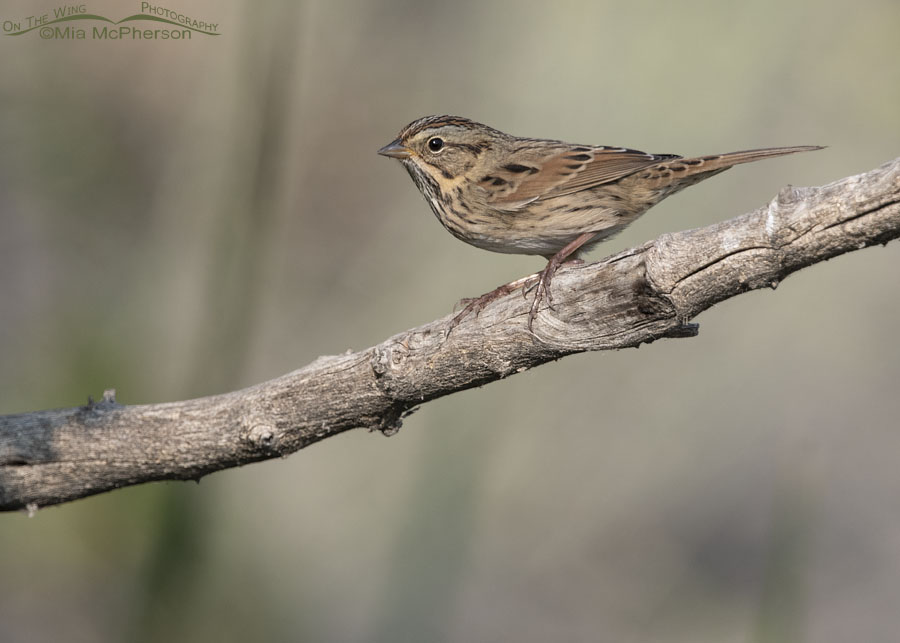 Lincoln’s Sparrow adult perched on a thick branch
Lincoln’s Sparrow adult perched on a thick branch
The breeding habitat of Lincoln’s Sparrows are wet thickets or shrubby bogs across Canada, Alaska, and the northeastern and western United States; this bird is less common in the eastern parts of its range.
I found and photographed this Lincoln’s Sparrow near a freshwater seep in desert habitat in Box Elder County, Utah
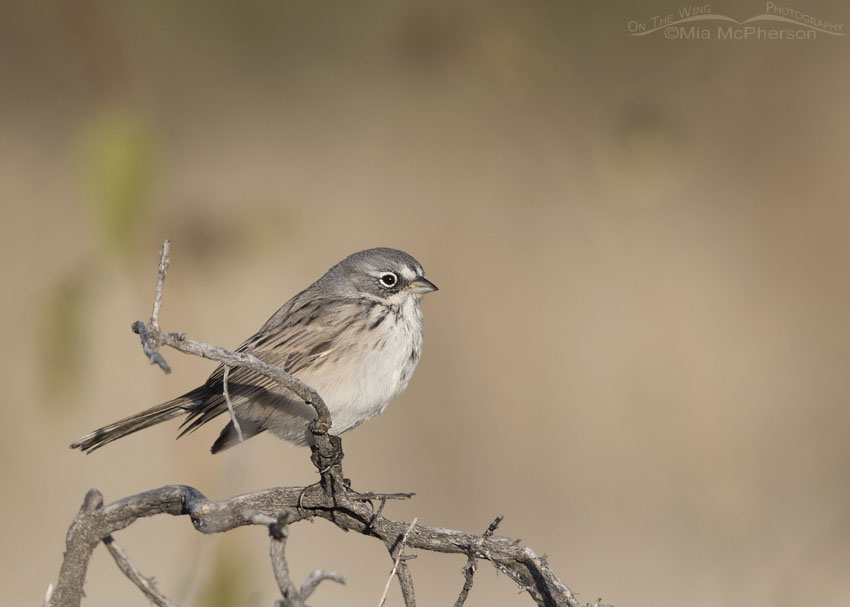 Adult Sagebrush Sparrow
Adult Sagebrush Sparrow
Sagebrush Sparrows are found in the western U.S. and Mexico on sagebrush steppes, shrubsteppe habitats, sagebrush-juniper habitats, dry shrublands, deserts, thickets and grasslands.
I can no longer access the area where I found and photographed this Sagebrush Sparrow on Antelope Island State Park because the park has placed a gate across the narrow dirt road. The road leads to a camping site that is used approximately only thirteen times a year but all public access is now blocked year round. I don’t think this was the correct action to take at all.
The Sagebrush Sparrows love that area.
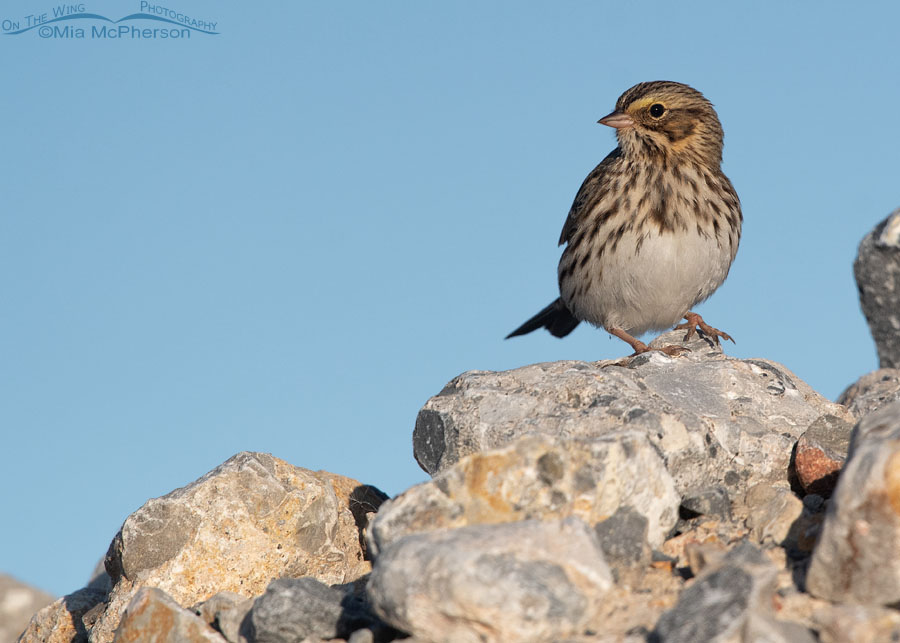 Savannah Sparrow on some rocks
Savannah Sparrow on some rocks
The breeding range of Savannah Sparrows extends from Alaska east to Labrador, as far south as Georgia in the east and central Arizona in the West. There are year round resident, breeding populations in Mexico and southern California. Savannah Sparrows are found in marshes, wet meadows, salt marshes, short-grass prairies, tundra, mountain meadows, and grasslands.
I photographed this Savannah Sparrow perched on some rocks in the wetlands of Farmington Bay WMA in Davis County, Utah.
 Song Sparrow singing on the marsh
Song Sparrow singing on the marsh
Song Sparrows can be found in many types of habitat including near tidal and freshwater marshes, desert scrub, sagebrush steppe, forest edges, suburbs, grasslands, prairies, agricultural fields, pastures, pinyon pine forests, aspen forests, chaparral, deciduous and mixed forests and at feeders in backyards throughout much of North America.
I found and photographed this singing Song Sparrow in the marshes of Bear River Migratory Bird Refuge in Box Elder County, Utah.
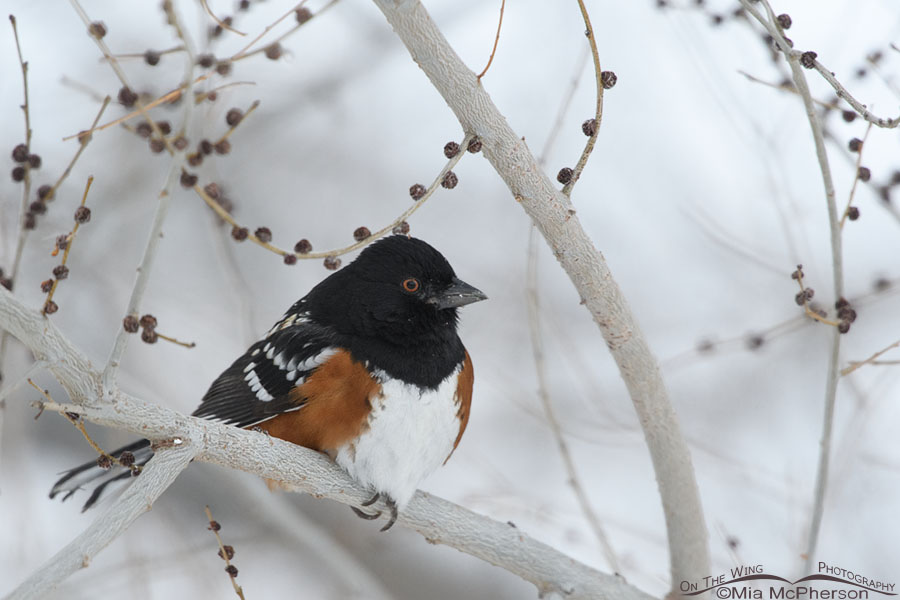
Winter male Spotted Towhee perched in a tree
Spotted Towhees are year round residents in many areas and short distance migrants in others. They can be found in southwestern areas of Canada, Mexico and the Western U.S., The habitat preferred by Spotted Towhees include forest edges, thickets, shrubs, bushes, overgrown fields, and gardens.
At one point Spotted Towhees and Eastern Towhees were lumped together and called Rufous-sided Towhees.
I photographed this male Spotted Towhee near the Jordan River in Salt Lake County, Utah.
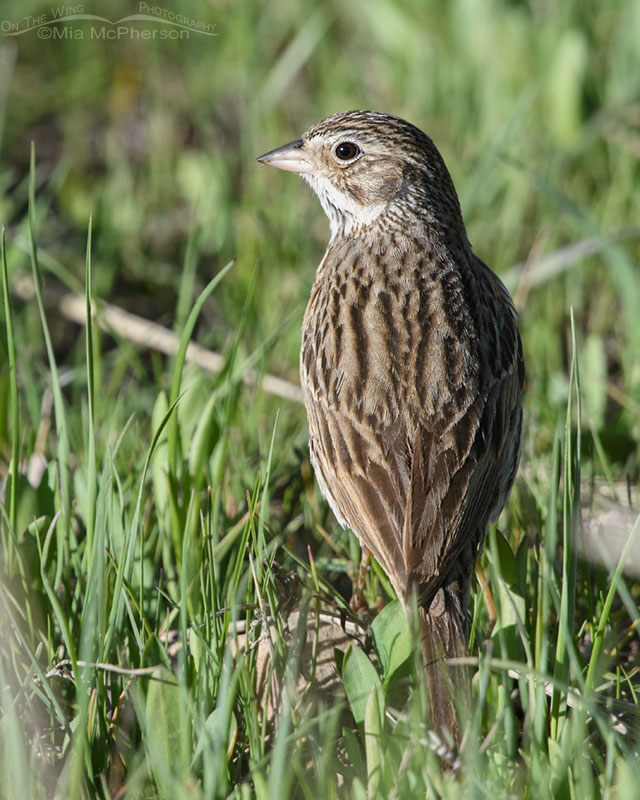 Vesper Sparrow back view
Vesper Sparrow back view
Vesper Sparrows breed from the Northwest Territories, British Columbia, Quebec and Nova Scotia south to central California, New Mexico and east to western North Carolina. They winter in central California, Oklahoma, along the Gulf Coast and Mid-Atlantic states. Vesper Sparrows habitat includes open fields, grasslands, fallow fields, prairies, sagebrush steppe, mountains, roadsides, meadows and pastures.
I found and photographed this Vesper Sparrow in a meadow in a canyon of the Wasatch Mountains in Summit County, Utah.
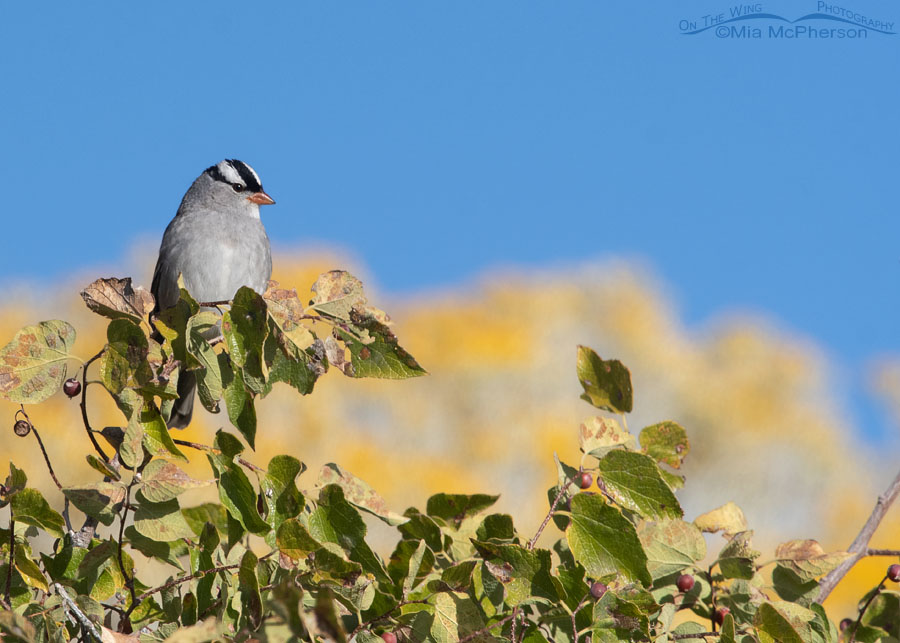 Adult White-crowned Sparrow in a Hackberry tree
Adult White-crowned Sparrow in a Hackberry tree
White-crowned Sparrows appear over much of North America during their breeding and nonbreeding season. They can be found in open woods, open grasslands, gardens, mountains, forests, and backyards.
I spotted this adult White-crowned Sparrow in desert habitat perched on a fruiting Netleaf Hackberry tree in Box Elder County, Utah.
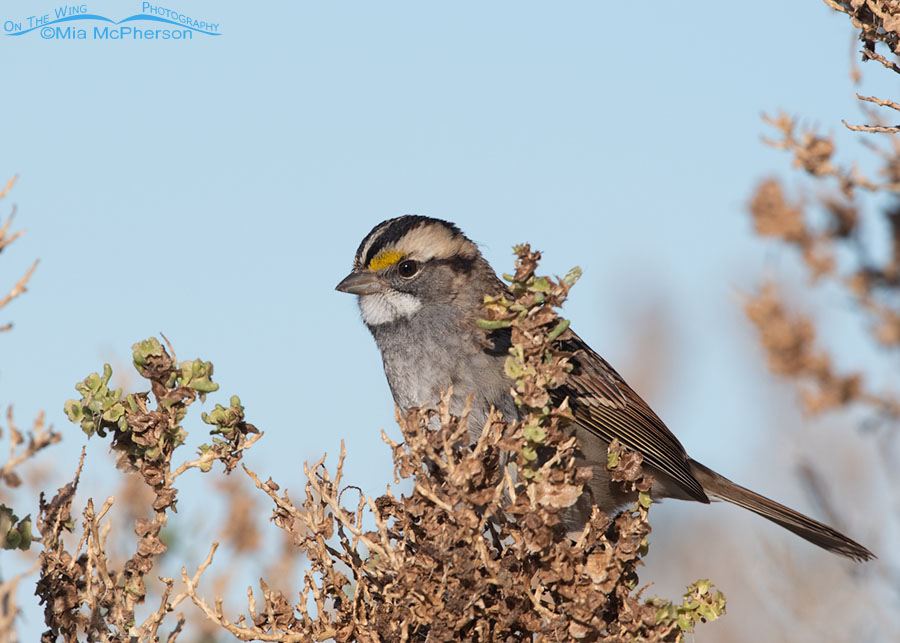 Adult White-throated Sparrow perched on a greasewood
Adult White-throated Sparrow perched on a greasewood
White-throated Sparrows breed from the Yukon and Northwest Territories in Canada south to Minnesota, Pennsylvania, east to New England and Newfoundland. White-throated Sparrows spend winters in much of the eastern U.S. and in smaller numbers, in southwestern states. Their preferred habitats include brushy and semi-open mixed woods. In winter they are found in wood lots, gardens, scrub lands, and backyards.
I found, then pointed out, and photographed this White-throated Sparrow at Farmington Bay WMA near a marshy area. They are uncommon visitors to Utah.
Sparrows are fascinating birds. I photograph them every chance I get. Some of these sparrow species are in decline and we should be doing everything we can to protect them and just as importantly, their habitat.
In North America there are 48 species of sparrows in 20 genera, give or take one or two because of lumps and splits after my 2nd edition of The Sibley Guide to Birds was published in 2014. These are photos of just 15 of those sparrow species.
Happy First Day of Spring!
Life is good.
Mia
Click here to see more of my sparrow photos plus facts and information about each species.


Extraordinary series! Eye candy for those of us who love Sparrows. Every pic is worthy of a frame. Thanks Mia.
Wonderful sparrow series Mia, I also love them.
Lovely collection of photos! I hardly ever see one of my favorite anymore on Antelope Island. The lark sparrow use to be so abundant there in summers.I am surprised you don’t have a black throated sparrow. They are very common in St George area.
Thank you so much.
‘Our’ sparrows where introduced to Australia. I love them and worry about their decline.
Thank you for giving these beautiful and fascinating birds their due! So many people dismiss them as “just LBJs,” but they are so interesting to me. Several species like to hang out at the shelter (and pilfer the dogs’ kibble, but that’s another story) and the Panera near me has a little crew of “resident” House Sparrows that take care of the crumbs on the patio.
What a wonderful series of sparrows. Thank you!
I’ve just learned so much! Thanks, Mia.